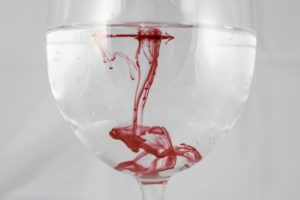 Jesus inaugurates the end of religion – heaven and earth have been joined, there is no more temple:
Jesus inaugurates the end of religion – heaven and earth have been joined, there is no more temple:
I saw no temple in the city, for its temple is the Lord God the Almighty and the Lamb. And the city has no need of sun or moon to shine on it, for the glory of God is its light, and its lamp is the Lamb. And there will be no more night; they need no light of lamp or sun, for the Lord God will be their light, and they will reign forever and ever. (Revelation 21:22-23)
Powerful words from Revelation – steeped in symbol from the Jewish scriptures – Easter, and in fact every Sunday, every time the baptized celebrate the astonishing mystery of the Passover, the Eucharist, we proclaim this unification of heaven and earth, God and human, there is no more religion, no more temple, for God is all and in all.
The Gospel of John is known as the mystical or spiritual gospel for it is rich in symbol, typology, and meaning – as is the Apocalyptic John. Often the text is pointing to something else, always reflecting the Old Testament, it presents the experience of a post temple, exiled Jewish Christian sect in a Hellenic world. The dispersed post-temple Jewish diaspora were desperately trying to answer the question – how are we to be Jews with no temple, nowhere to offer sacrifice? Along came this outrageous Christian sect: God became the temple in Jesus who now lives in us, that we “may be one” (John 17:21).
The crucifixion, according to John, happened on the day of the Passover, giving emphasis to Jesus as the Paschal Lamb. Envision for a moment, the Temple of Jerusalem at Passover: thousands of animals slaughtered on the altars by the priests in the temple. The blood, which for the Jewish understanding contained the life force of a being, would have needed to be constantly washed off the altars with water. There was a rough plumbing system that carried this co-mingled blood and water, through the streets and out a pipe on the temple wall.
If you further recall, crucifixions happened outside the temple – imagine the view from the cross at the temple during the Passover and the river of water and blood cascading from the temple plumbing. Now hear from John: “one of the soldiers pierced his side with a spear, and at once blood and water came out” (John 19:34).
The spear in Jesus’ side, this comingled blood and water, represents the blood of God, the life force of God, comingled with the water of creation – flowing out His side, like the temple wall just off in the background. What a connection: Jesus IS the new temple, the old has passed away, animal sacrifice is no more, as Jesus, God, has become the Paschal Lamb – earth and heaven are re-united.
That is what we, the baptized, proclaim when we meet on this 8th day of creation, and celebrate these holy mysteries, this banquet of a new kingdom. In baptism we have died and risen with Him and so in the Eucharist we freely return again yielding to the new world where there is no more temple, where God is all and in all, forever and ever, a world that is now being unveiled, revealed. In the Passover feast we are participating in our ongoing recreation, we come to have our minds and hearts and eyes and ears opened, our selves transformed, reunited with God, knit into God’s person that we return to the still broken world and WE become Christ, the anointed, the agents of re-creation, for the life of the world. As Alexandar Schmemann says: “For Christ died for the life of the world and not an eternal rest from it.”[1] Remember as we pass the font why we are going to the table of the lamb, where there is no temple.
[1] Alexandar Schmemann. For the Life of the World. St Vladimir’s Seminary Press, Crestwood, NY: 1963.(96-97)
